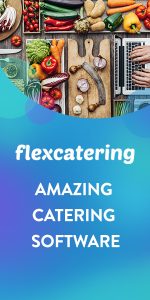This post is organized in two parts. Firstly, we will explore some tips on how to optimize online food ordering websites. After that, we will show you some examples of successful food business websites for inspiration,
We have been involved in building food ordering websites and software for the food industry for over 10 years. We have crafted 12 tips you can implement to increase sales and retention.
Let’s begin with the basics – you must make a great first impression with your website. You’ll only have a short amount of time to grab a viewer’s attention. Research says most people leave websites within 10-20 seconds. If your website is cluttered with unneeded information with no clear call to action, people will get confused and leave.
Therefore, creating a food website that has a great customer experience and clearly communicates your value proposition will lead to more sales.
12 Key Strategies to Enhance Online Food Ordering Websites’ Features
1. Start with the Right Website Software
The importance of integrated catering management software is often overlooked in the food business. The website is seen as a store and nothing more. On the contrary, having the right website software can streamline kitchen production, customer management, finance, marketing, and much more. It becomes a powerful tool that transcends ‘just a website’ idea.
In addition, a good solution should consolidate the online ordering website + kitchen software into one. It doesn’t end there. You can also save employee time by not having to handle multiple systems. It comes down to saving money, time and using the data available to increase sales.
We live in an advanced information age, and using a basic website may no longer cut it. You will need to have food-oriented features. A few features to consider:
- food product configurations (combos and variations)
- order cut off times
- control when customers can order
- set days off
- minimum order quantity
- integration with other software such as marketing, accounting, and delivery services such as DoorDash
- If you are selling B2B: cost center, purchase order, different payment method per account
In other words, choose your website software carefully. Make sure it covers all needs for online ordering while at the same time providing the food management part. Choosing the right software will give you more options with less customization.
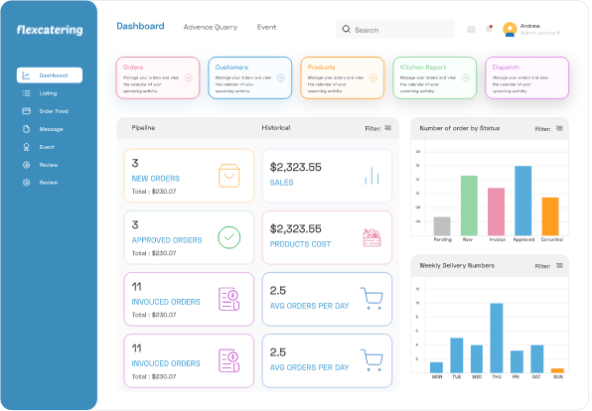
2. Add a Value Proposition
Let’s start with the basics. The value proposition tells the potential customer what you do and why you do it. Put your value proposition on your home page, preferably in the banner, so when a new visitor comes they can see it instantly. Typically the top of the screen or headline is the best real estate to place it. It should be short and sweet to interest the customer and guide them to the next steps.
Do’s and Don’ts:
- Don’t be clever, be clear.
- 1 CTA only
- No buzzwords (it’s tacky)
If they want to learn more about your mission or any longer format information feel free to write about it on your About page.
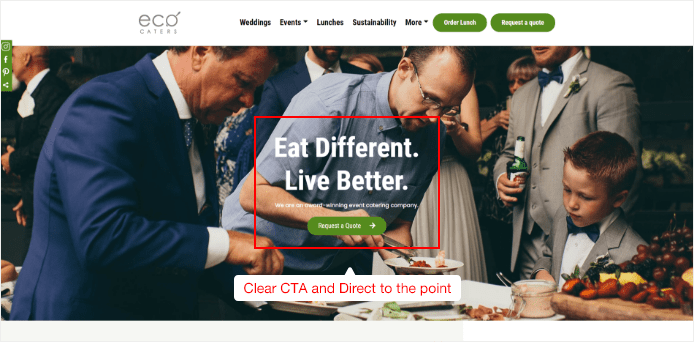
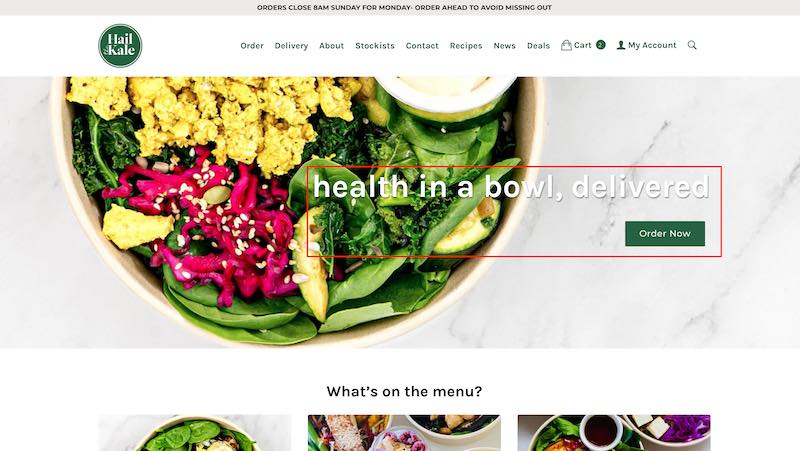
3. Food Website Layout and Navigation
One of the most critical factors why food websites fail is that their site is difficult to use: too many categories, too many options, complicated workflow and lack of filters are just among a few of the issues.
When creating a website, try to put yourself in the customer’s shoes and see how easy it is to use your service. Communicate what your business does on the homepage and what to click to create an order. Make sure your product selection is concise, not too long yet attractive for your audience. As greek mythology goes: you can’t please Greeks and Trojans at the same time. So focus the products and navigation on your target audience.
Do’s:
- GIFs are your best friend
- Keep the overall design simple.
- Keep the home page focused.
- Make it about the user.
- Video is king
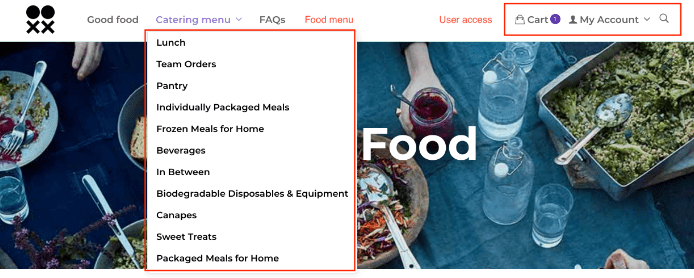
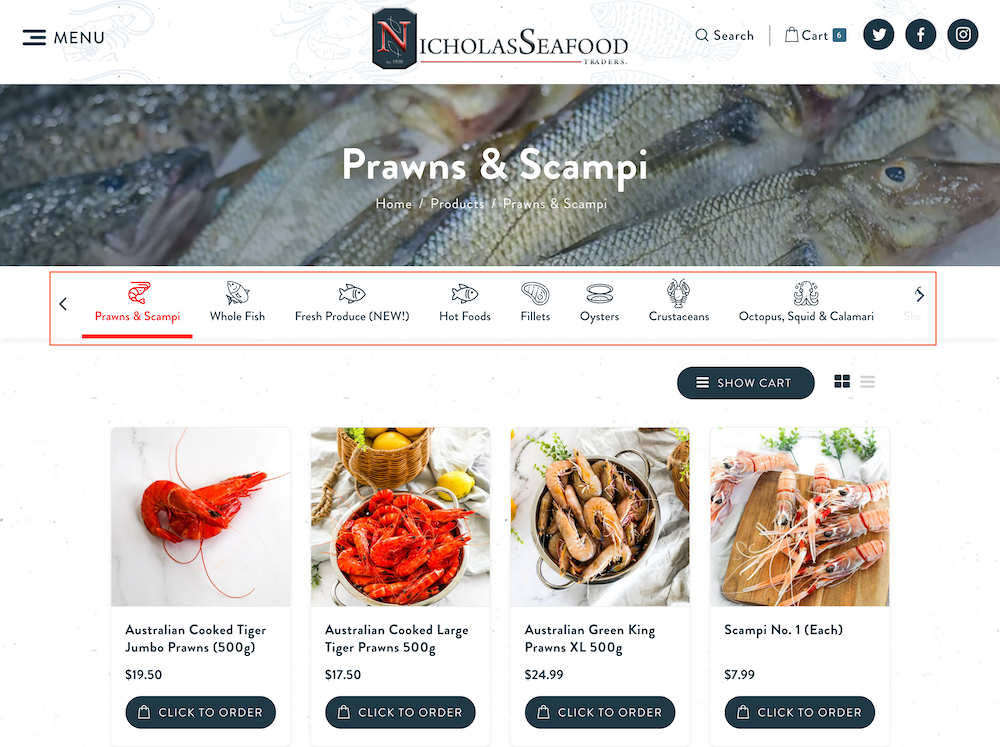
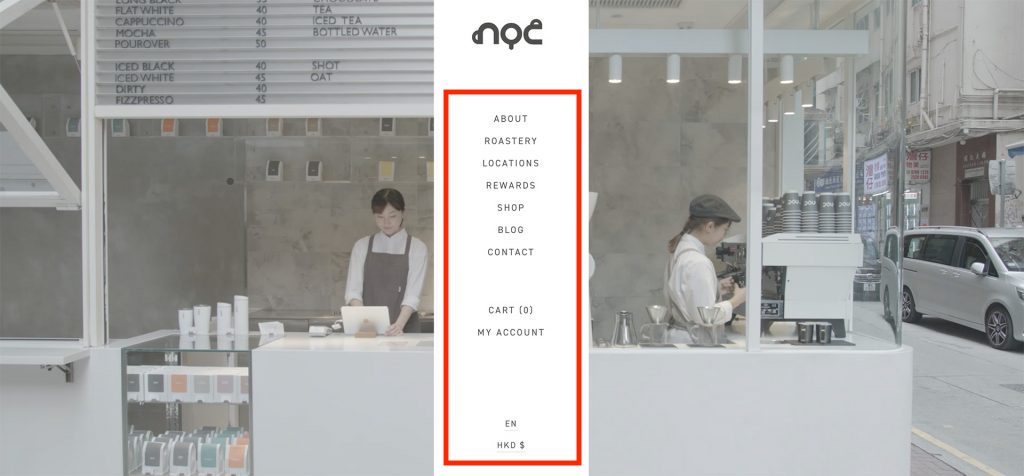
4. Call to Action Text
The call to action (or CTA) is a huge part of any online catering business. You’ve done the difficult part of getting the potential customer to the website. Now tell them what to do! CTAs should do exactly what they say. The best CTAs to put on your website are:
- Shop Now (or Browser Menu)! You are an online store, so get your customers to navigate through your products and adding them to the cart. Imagine you are entering a brick-and-mortar store, and the store person is asking you questions like what’s your email address, sharing your photos on social media etc. It can be overwhelming…. ‘Hey, I just want to browse the shelves’…. It is no different when it comes to an e-commerce website. Make it easier for the customers to browse what you offer. We are not saying newsletters, or social media sharing shouldn’t be present, but they should definitely not be the first CTA.
- Email Form: a popup form where users must provide their name and email to receive a discount. Afterward, you can send promotional emails that will lead to more sales. This should be offered and presented after the first visit. Perhaps even a few seconds after the user has navigated through the food website.
- Social Sharing: encouraging users to post photos and tag your business can generate more clicks to the website. Offer a reward for each social platform they share on.
- Referral program: create a referral program so customers can invite friends and family to the service for a one-time reward. Place a button on the website with words like “Invite a friend for a $5 discount on your next order!” or something similar.
Examples of calls to action
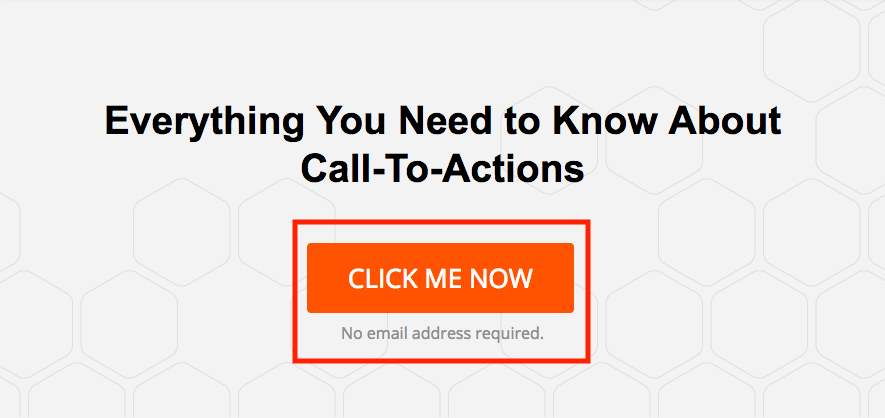
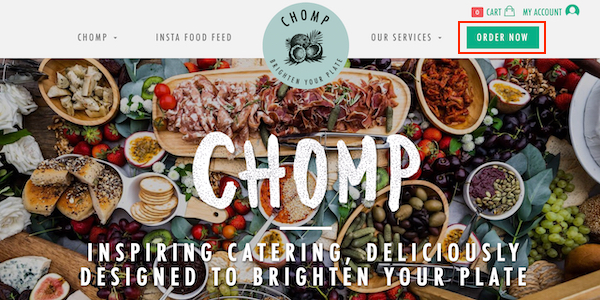

5. Great Food Images are Game-Changing
When people first visit your food website, they can easily see if the brand is high-quality by looking at the images. GIFs are awesome, they move, they give depth to your products. Image sells food! Say no to basic stock photos. This can decrease trust and loss of interest and in the worse case the final product doesn’t match the photo on the website.
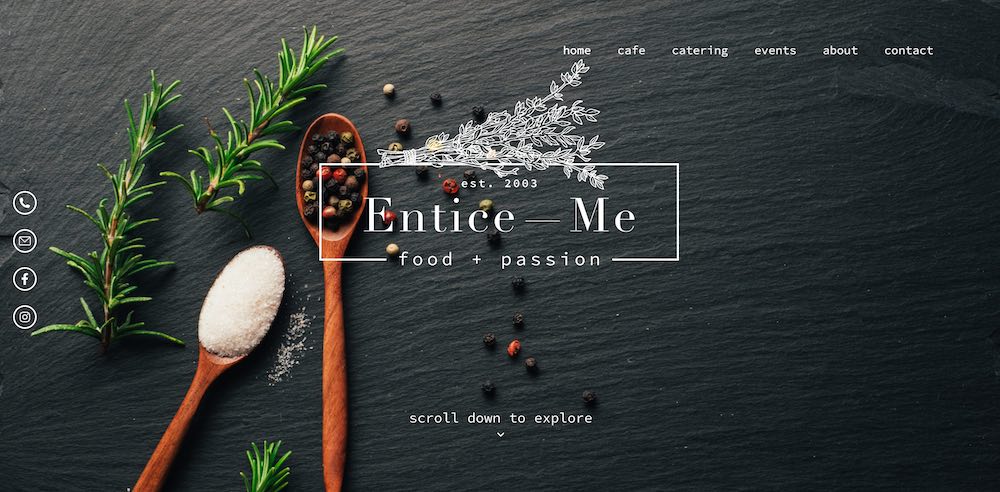
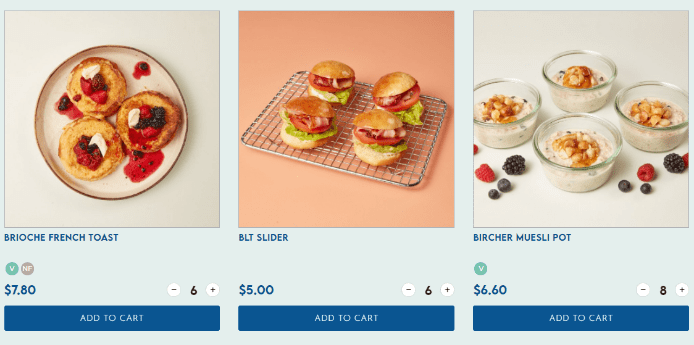
6. Use White Space or go Full Character
A common misconception is that white space means unused real estate. However, this is untrue; look at some of the biggest food websites, and you’ll see a lot of blank space. This is because white space lets the user focus on the content in the center without being distracted. White space can make your website look modern and feel open.
On the other hand, you can replace the white space with your brand’s theme colors. This gives the site a personalized touch. If you do that, then go all the way to making a full thematic website. Seating on the fence can create that unwanted tacky or unfinished look and feel.

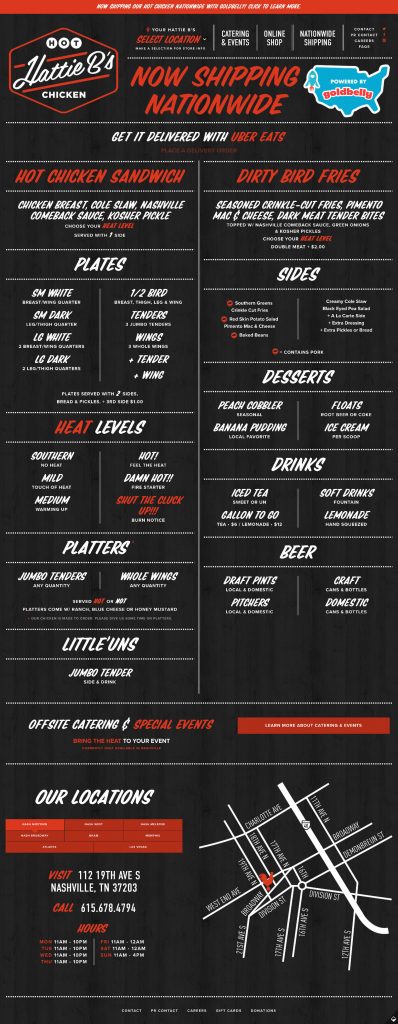
7. Social Proof
In today’s society, social media is everything for increasing trustworthiness. A big following shows customers you are reliable and provide a good product. Additionally, you can post promotions and contests to gain follower retention. Instagram is the winner when the segment is food. Mouth watering, well-set food pics attract customers.
If you have the budget, attach an influencer to the business. They already have a following that trusts them, and if they promote your business, it’ll generate sales.
- Video social proof wins – this is great and takes the experience at the personal level (see example below)
- Inject social proof in your copy. Example: how many customers or meals you’ve served. Numbers that will make you look exceptional.

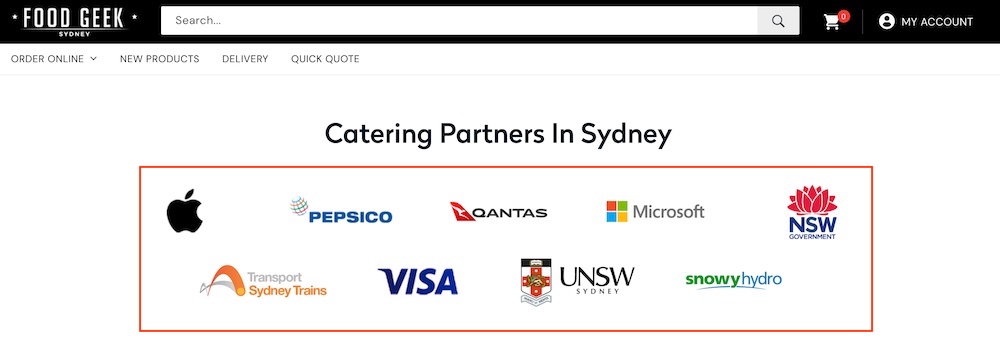
8. Testimonials
A testimonial page is a great way to ensure that your food website is trustworthy and delivers a brilliant product. If you have clients that say amazing things about you, customers should see it. A video testimonial is far better than a written text block because people can see genuine emotions.

9. One-Page Checkout Only
A one-page checkout can significantly reduce the likelihood of cart abandonment. The page should feature all the functionality of a standard checkout page, such as cart contents, payment details, billing, and shipping. The final result should be a smoother process with fewer clicks and steps.

10. Make it as Easy as Possible to Cart/Checkout
Many potential customers leave the food website when the checkout process is too difficult or a hassle. Don’t require a shopper to register before checking out. Instead, give the option to proceed as a guest to make the process smoother.
Also, ensure the cart is saved if the customer accidentally clicks off the website or wants to finish shopping another time. Abandoned carts tracking is a must. You should be able to evaluate how many carts are abandoned over a period of time and make changes to reduce them.

11. Fine Tune your SEO
Search engine optimization is a fundamental part of boosting visitors to your website. Your website ranks on Google = you will get more leads. When a user types in a phrase that’s relevant to your product, you want the website to come up first. You can enhance the rate at which your website is shown by fine-tuning the on-site SEO. This means using keywords in your titles, metas, and blog posts.
Do’s:
- Make the H1 counts. H1 is the main text on your pages.
- Type the metas to all pages, with special focus on home page and menu pages
- Always follow Google’s recommendations for metas sizes.
- Make sure all URLs represent their respective pages.
Example of H1

Example of Metas

Meta Description: Clam chowder in a sourdough bread bowl is believed to have originated in 1849, in the San Francisco restaurant called Boudin, and has since become the …
12. Add and Analyse Google Analytics
Understanding why your website is not getting traffic can be difficult without using Google Analytics. The software gathers valuable data that you can use to increase SEO and understand your target demographics, among many other performance factors. You can see what keywords rank and what your competitors are doing. Therefore, you can be one step ahead and adjust your website accordingly.
12 Best-Looking Food Ordering Websites
Get inspired !

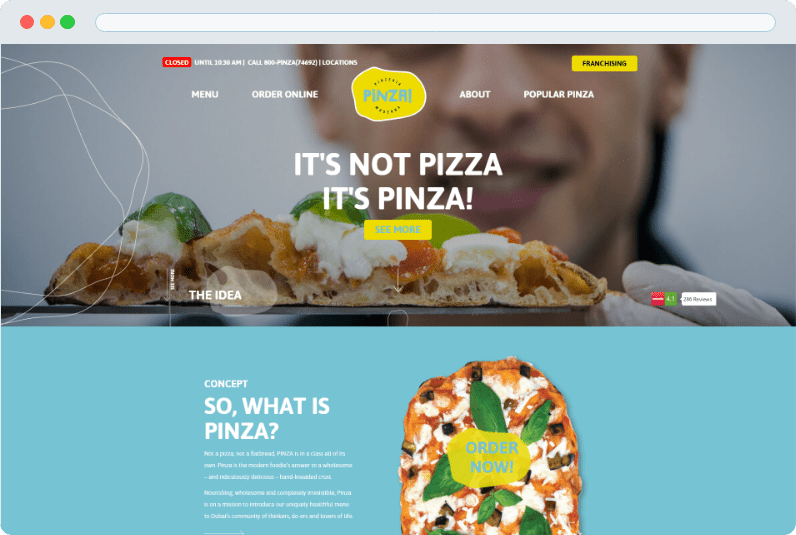

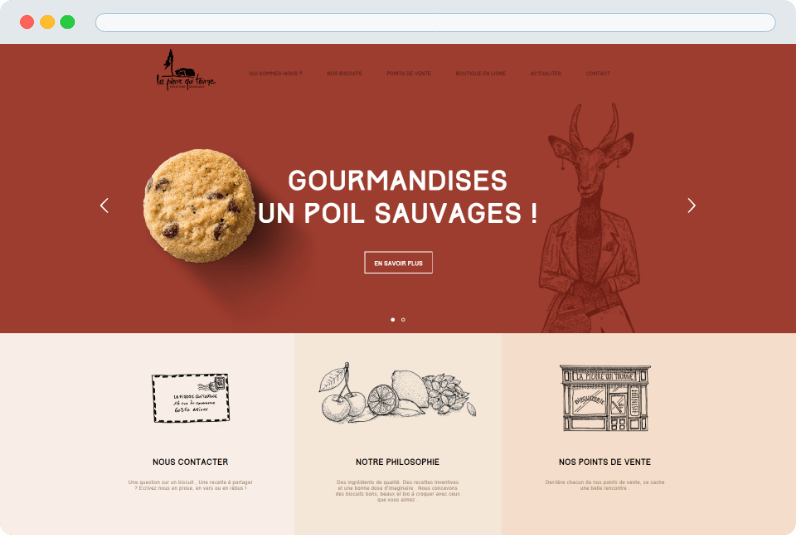
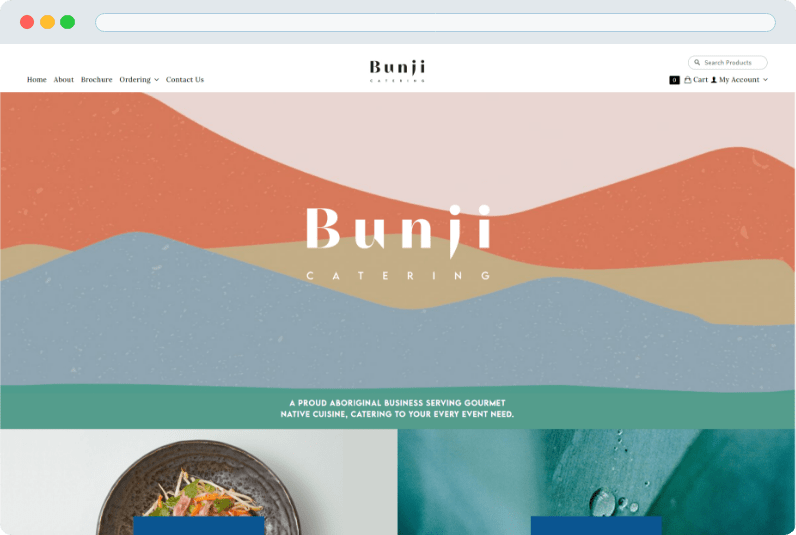
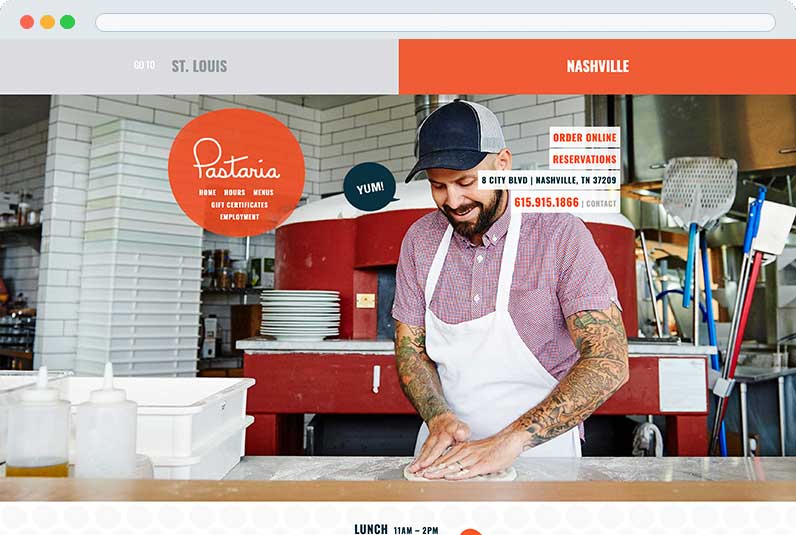
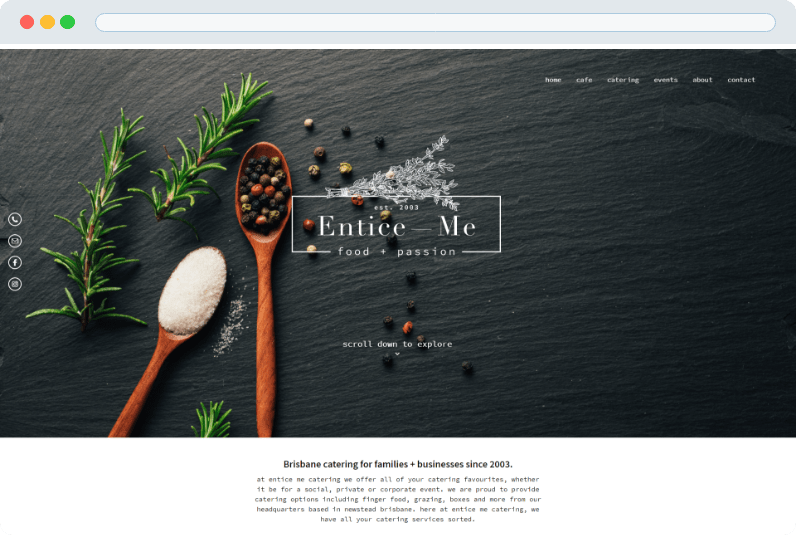
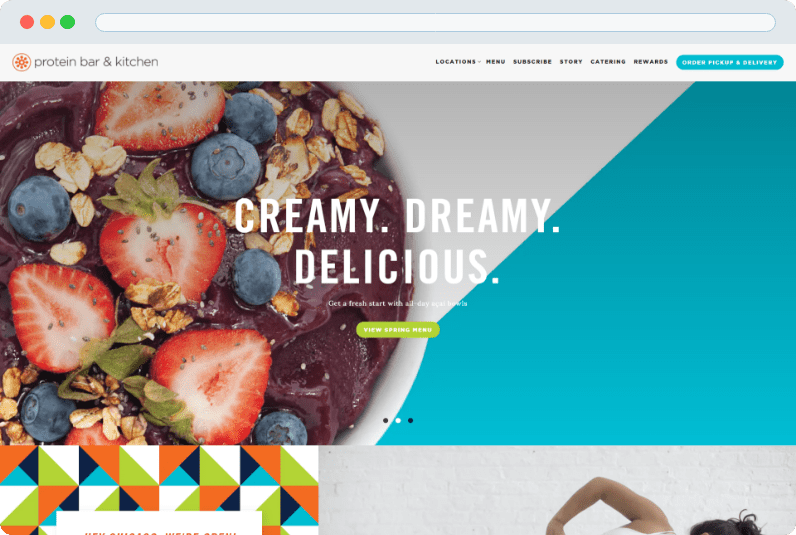
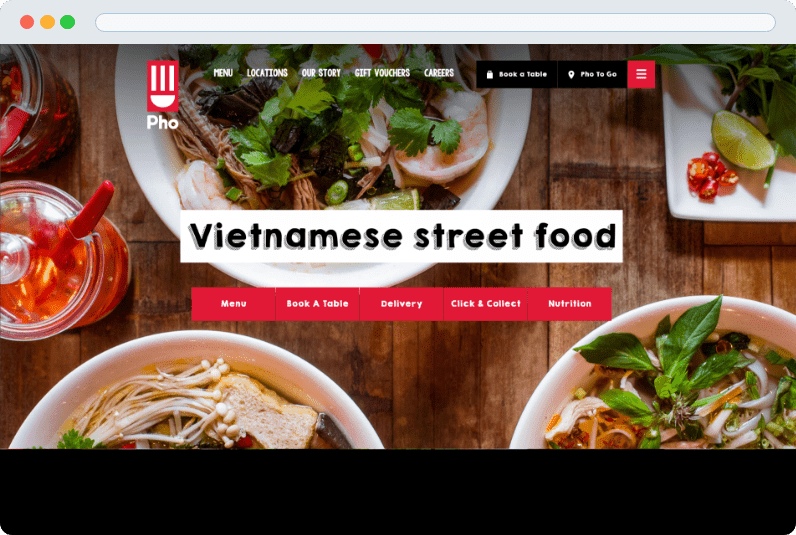
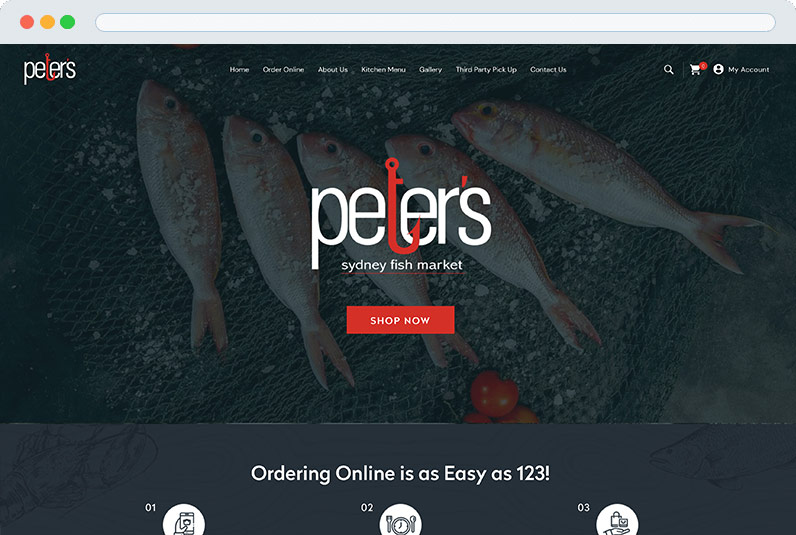
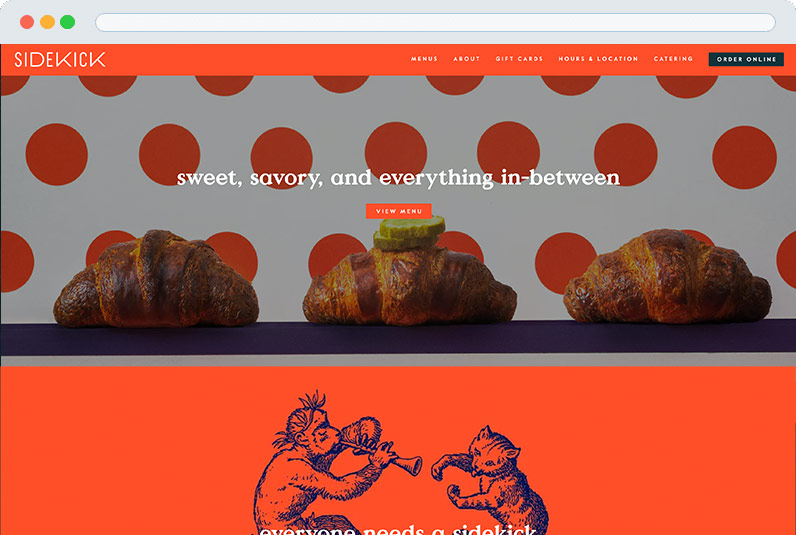
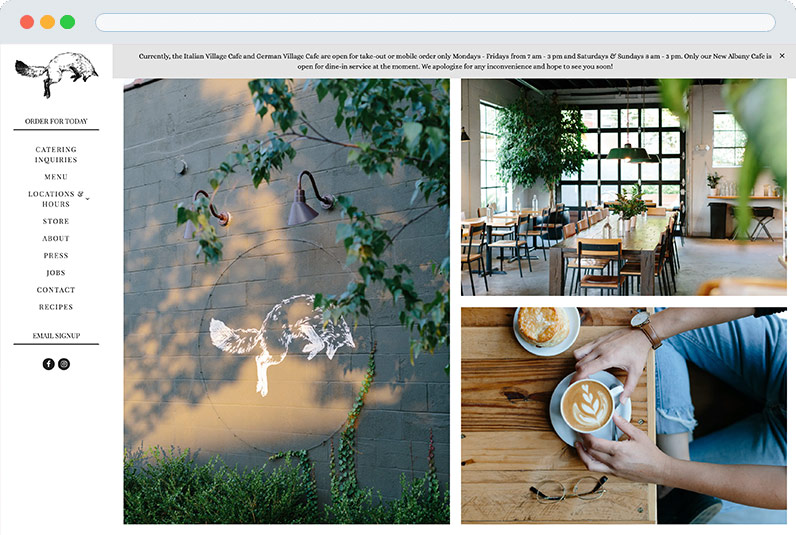
FAQs
Are These Online Food Ordering Websites Accessible Nationwide?
Most of these websites have a broad reach, but availability can vary based on location. It’s recommended to check each site to confirm their service in your specific area.
How Reliable Are These Best Online Food Ordering Websites?
These websites are generally reliable, boasting user-friendly interfaces, prompt delivery times, and various culinary options. They have a solid reputation in the market.
Can I Find Healthy and Dietary-Specific Options on These Websites?
Yes, most of these online food ordering websites cater to a variety of dietary needs, including vegetarian, vegan, gluten-free, and more. However, it’s best to check each website for specifics.
Final thoughts
Pondering which tip to kickstart your website improvement journey with? Begin by developing a strategic plan. Prioritize the elements directly impacting your sales and roll them out sequentially. The ultimate goal is to integrate all these tips, driving a surge in website traffic and promoting customer loyalty.
To gain additional perspective, put yourself in your customers’ shoes. What would encourage you to place an order? If the current state of your website wouldn’t compel you to make a purchase, it’s unlikely to inspire your customers, either. Make your website’s focus clear, easy to navigate with a unique twist, and ensure a seamless checkout process.
At this point, don’t hesitate to seek professional assistance. Reach out to Flex Catering. Our expertise lies in bolstering businesses like yours to excel with online food ordering websites. Let us guide you toward enhancing your digital presence and achieving success. Contact us today, and let’s embark on this journey together.



